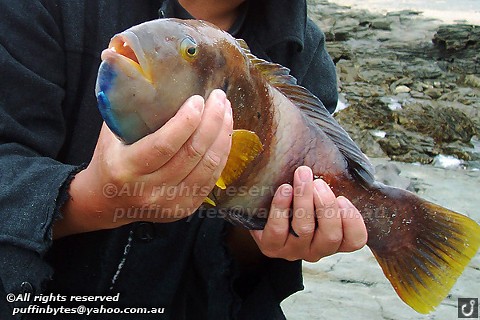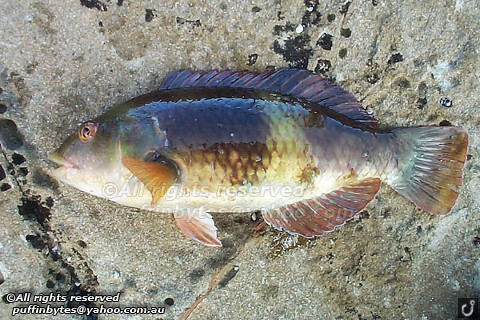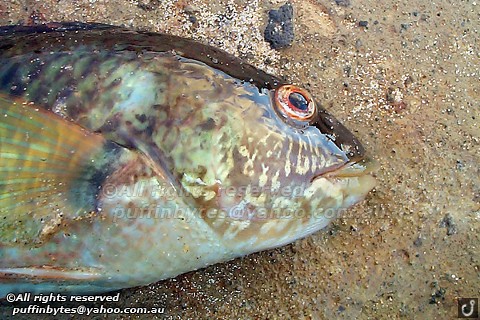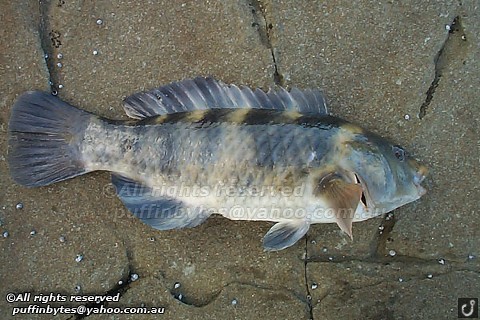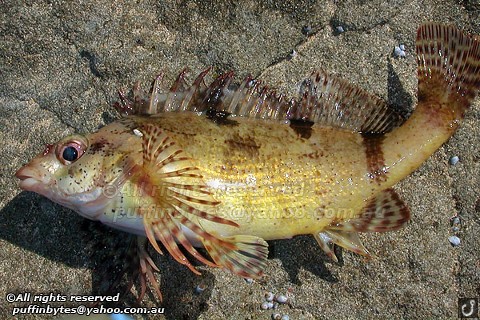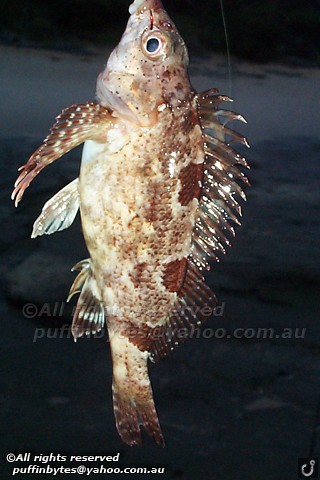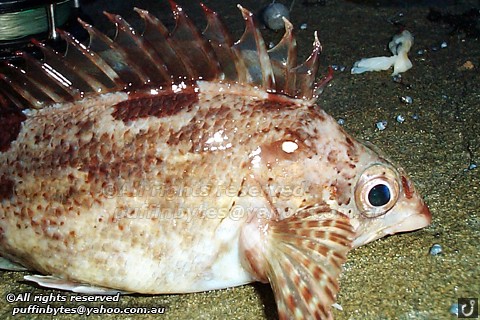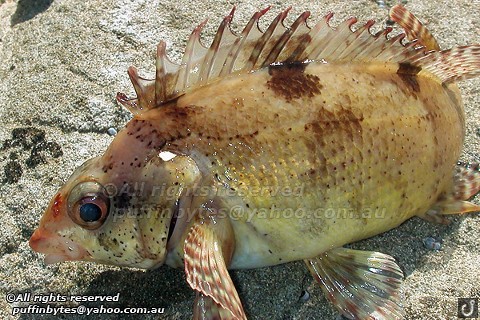Beach Fishing
If you go to just about any beach along the Great Ocean Road and throw out a line, you should be able to catch some decent sized Australian Salmon and Yellow-eye Mullet. All you need to do is setup a paternoster and bait up with pipies or pilchards and you are set.
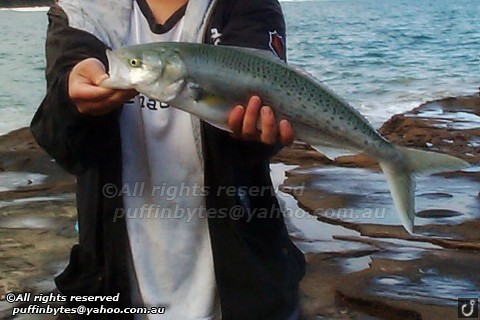
Western Australian salmon - Arripis truttacea
I found that at night on certain beaches, if you cast any bait out, you will end up with a Bearded Cod [#27] on the end of your line. Cod are meant to be sports fish and hard fighters, but the Bearded Cod, although related to true Cods, have tiny tails and fight very poorly for their size. If you can manage to avoid the Cod, you might get into some really nice snapper on these same beaches.

Bearded Cod - Pseudophycis barbata #27
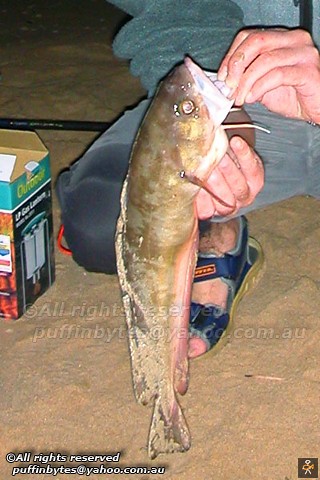
Bearded Cod - Pseudophycis barbata

Snapper - Pagrus auratus
Rock Fishing
As well as the species I talked about in the previous blog post, you are also likely too hook into some leatherjackets. These are close relatives to Triggerfish and are called filefish in other countries because of their rough skins. I have probably caught other species but only have photographs of two species. They are the Six-spined Leatherjacket [#28] and Horseshoe Leatherjacket [#29]. I think the names are quite descriptive. The Six-spined has six spines at the base of it's tail and the Horseshoe as a large horseshoe shape on its flanks.

Six-spined Leatherjacket - Meuschenia freycineti #28
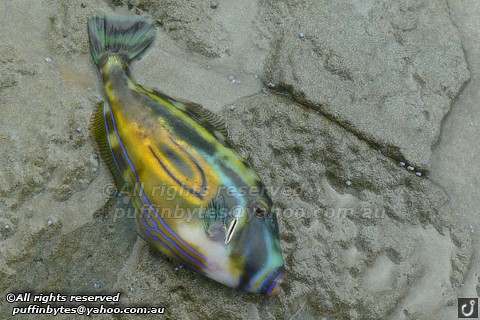
Horseshoe Leatherjacket - Meuschenia hippocrepis #29
Another nuisance fish you might get here is the Dragonet, also known as the Thornfish [#30]. They might look venomous with they scorpionfish like shape, but are actually harmless.
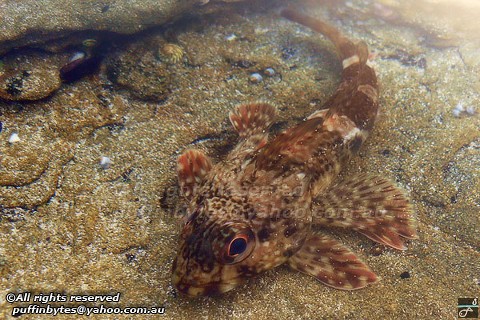
Thornfish - Bovichtus angustifrons #30
When Fishing the rocks, you may try to fish into the deeper clear water sections of wash where you can target Sea Sweep [#31]. These are more mid to top-level feeder so make sure you bait is not sitting at the bottom.

Sea Sweep - Scorpis aequipinnis #31
